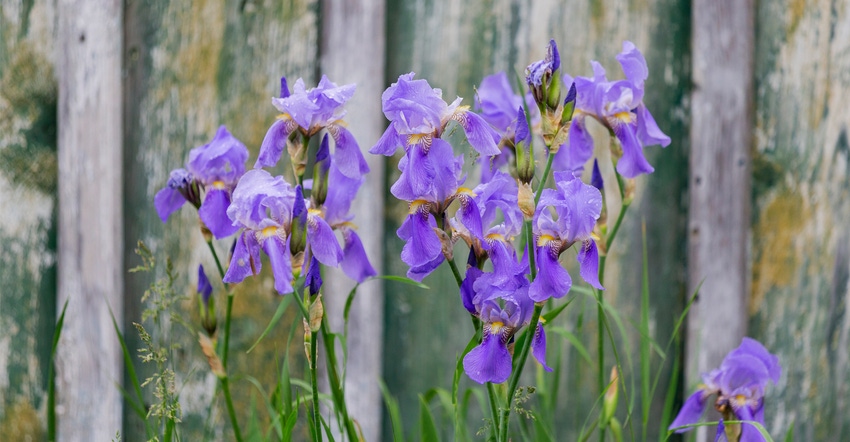April 29, 2022

Drive long enough down a Kansas dirt road, and you’ll see the tattered remnants of a farmstead.
I see a lot of those in my travels around the state. Old Victorian wood frames, with their sagging porches where children used to play. Crumbling two-story limestone showpieces with cows grazing what used to be the front lawn. Sometimes there’s a barn or other outbuilding, maybe even a span of wrought-iron fence and a gate.
But in some places, all that remains of these hopes and dreams of our ancestors are the irises that pop up in the spring.
Hope
When you’re packing up your life into a wagon to travel into the unknown with the hope of putting down roots on 160 acres of the American dream, you have serious decisions to make. Implements to plant a crop and build a house had priority in the wagon, of course. Household items to feed and clothe the family were next. Items that didn’t serve a purpose tended to get left behind.
Except for flower bulbs and vegetable seeds. Those somehow made their way across the Plains. I like to think they were the essentials to hopeful young brides leaving their families for the West.
In my mind, I imagine a worried mother giving her daughter iris bulbs from her own flowerbed and those of their neighbors — a bit of home in a strange land. I see a new husband begrudgingly make a space on the wagon to haul apple and other fruit tree saplings started from a family orchard in Ohio, or Wisconsin, or some other state back East.
The other cargo in those wagons was to sustain the body. But those seeds and bulbs? They were there to sustain hope.
Sadly, there were blizzards, drought, grasshopper plagues, and dust storms mammoth enough to blacken the sky; each one chipped away at the hope in many of those homesteaders. So many picked up stakes and moved on. Some lasted through the Dust Bowl, only to fold up with the next financial or natural disaster to come along.
And the only thing that remains to remind us they were here are the flowers and shrubs they left behind.
Spring remembers
Now, when I was 10 years old, our family built a new house, and my mom had about 2 acres of yard to landscape from scratch — with a limited budget. I remember loading up in the pickup truck with her and my siblings on weekends in the spring and fall, and driving around our pastures digging up redbud and cottonwood saplings to transplant to our new yard. We had a few of those old homesteads, with iris and lilac bushes, and we collected a few starts and bulbs for the new yard, too.
And my grandma, of course, brought iris bulbs from her own yard in town.
I remember when we planted those bulbs, my mom and grandma told me that these were irises that came from bulbs from my great-grandmother’s flower beds. They told me that no matter the struggles of our family, there was always room for a little bit of hope.
Those iris bulbs, after all, survived and bloomed through two world wars, in times of feast and famine, and in times of heartbreak and celebration. And if they could survive, than we could too.
Today, when I see irises or other blooming plants on an abandoned homestead, I’m reminded that dreams may not pan out, but the irises remember those who at least tried.
You May Also Like




